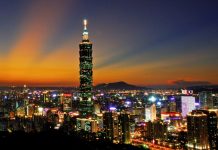Hailed as one the biggest tourism product of the 21st century, SILK Road encompasses scores of country on the world tourism map, from South East Asia, Far East and China to South and Central Asia, Middle East and Europe, with China not only hosting the largest part of the route but also as one of its biggest advocate. Tian Xin, Director, CNTO India speaks on the 2018 Dunhuang Silk Road International Tourism Festival, named after the city of Dunhuang, a major stop on the ancient Silk route, as well as NTOs plan to boost China’s Silk Road tourism products profile in India and the ancient Silk Road as a means to promote transnational tourism.
Q: How does Dunhuang Silk Road International Tourism festival 2018 plan to put the potential Silk Road Tourism Festival in the increasing tourism spotlight in India?
A: Lying in the Northwest China, Gansu Province boasts both a prime location along the Silk Road and the oldest region open to the outside world. The renowned route traverses the land more than 1,600 kilometres covering almost a quarter of the road. It has since become a passage of historical importance connecting the West and the East and promoting mutual transactions. We believe that the long history, splendid culture, and magical natural landscape in Gansu province are very attractive to India. Dunhuang Silk Road International Tourism festival 2018 will be a showcase window to introduce tourism resources along the Silk Road to India.
Q: The UNWTO ran a session designed to empower Silk Road tour operators to better understand, engage and work with the international travel trade on the sidelines of ITB Berlin earlier this year. Being one of the biggest proponent of this initiative, what role CNTO is playing in overseas markets like India, in facilitating enhanced co-operation and engagement between tour operators of the two countries?
A: The 8th UNWTO Silk Road Ministers’ Meeting was held on the sidelines of ITB Berlin. Adopting the theme “2025 Silk Road Tourism Agenda”, the Ministers and Heads of national tourist offices shared their ideas and strategies, which bring together 34 countries. CNTO plays a role to strengthen bilateral exchanges between tour operators of the two countries. CNTO has invited more than 70 Indian tour operators to participate in the 9th Central China Tourism Expo, Xi’an Silk Road International Tourism Expo, the 7th Dunhuang Tour on Silk Road International Tourism Festival, China International Travel Mart and FAM trips to China in 2017. Meanwhile, we have invited Chinese tour operators to participate in OTM, SATTE, TTF etc. in India.
Q: How does CNTO view India as a tourism source market? And how does Silk Road Tourism programme fits in the destination marketing-promotion scheme of things for CNTO in India, especially with a view to capture a larger slice of fast growing outbound travel from India?
A: CNTO takes India as a very important and potential tourism source market. Historical cultural heritages and natural tourist attractions scatter along the Silk Road Tourism route enabling the place to be the first item on the list of China’s Top Ten Tourism Routes designated by Ministry of Culture and Tourism of China. Due to its rich history and natural scenery, the place has thus become a world tourist attraction with great potentialities.
With the rapid rise of outbound tourism in India in recent years, CNTO is going to focus on the promotion of China’s Top Ten Tourism Routes including the Silk Road Tourism programme to the tour operators and public in India.
Chinese President Xi Jinping held an informal meeting with Indian Prime Minister Narendra Modi on April 27-28 in Wuhan, capital of central China’s Hubei Province. The two-day meeting was of historic significance to maintain strategic common interest and deepen mutual trust, opened a new chapter in bilateral relations, which shows the outside world the two neighbours are determined to strengthen their win-win partnership. The summit will have a huge impact on the tourism exchanges between the two countries in the future.
Q: What are the key Silk Road sites, cities and routes in the Ghansu Province of China?
A: Key destinations on the Silk Road route in Gansu Province of China include the cities of Lanzhou, Zhangye, Jiayu Pass, Dunhuang, etc. Zhangye Danxia National Geological Park is one of the best examples of Danxia landform with the most diverse topography in China and boasts nearly a thousand cliffs which appear bright red and reddish brown especially under strong sunlight, with the uniquely-shaped hills lighting up like an imposing kaleidoscopic.
Jiayu Pass is the first pass at the west end of the Ming Dynasty Great Wall, and a key waypoint along the ancient Silk Road. First built during the Ming Dynasty, it is the most spectacular section of the Great Wall of China. Now a tourist attraction, it holds performances recreating the frontier garrison drills of the past, acrobatics at the drill ground on the gate tower, and shadow puppetry inside the pass.
The Mogao Caves, also known as the Thousand Buddha Grottoes is hailed as the most valuable cultural discovery of the 20th century and the “Oriental Louvre”. With exquisite murals and statues, the caves have witnessed the golden days of the Silk Road and boast a large number of cultural relics related to this famous trade route. The site is comprised of the Mogao Caves Digital Display Center and the Mogao Caves themselves, with 735 caves, 45,000-square meters of murals and 2,415 painted clay statues, making it one of the largest and most colourful treasure troves of Buddhist art. It was listed in World Culture Heritage by UNESCO in 1987.
Q: Can you share some innovative ideas and proposals in increasing transnational cooperation for the development of Silk Road Tourism?
A: The Silk Road is a thoroughfare linking east-west trade and cultural exchanges which was named after the lucrative trade in silk carried out along its length. It is also a well-known World Heritage site. The Silk Road is the road of business and trade, and also the road of culture and tourism. It has become an important channel for tourism exchanges, cultural exchanges, mutual recognition, and mutual development of transnational people.
In order to increase transnational cooperation for the development of Silk Road Tourism, we advocate that the countries and regions along the road to strengthen tourism cooperation, deepen consensus, expand exchanges, actively engage with tourism development strategies, improve the level of tourism development in countries and regions; to strengthen policy communication, enhance the level of tourism facilitation, and continue to take measures in terms of visa, customs clearance, transportation, etc.
To create a tourism cooperation mechanism to enhance the quality of tourism exchanges through multi-level and diverse channels; to promote joint tourism promotion to create the Silk Road specialty tourism brands and related product routes; and to improve the early warning mechanism for tourism security risks, improve tourism risk handling capacity and safeguard the rights of tourism security.
Q:Can you suggest some attractive Silk Route specific Chinese as well as transnational tour programme or packages encompassing several countries?
A: The Chinese section of the route covers Shaanxi, Gansu, Ningxia, Qinghai and Xinjiang provinces as well as provincial-level autonomous regions. It has born witness to the journeys of Zhang Qian, Xuanzang, Marco Polo and other cultural figures, while leaving behind the glorious legacies of Qin Shi Huang’s Terracotta Army, Jiayu Pass, Mogao Caves and other ancient cultural relics as well as boasting dramatic natural wonders including Zhangye Danxia National Geological Park, Qinghai Lake and the Tianshan Tianchi, meaning that it has everything to suit a diverse palate of tastes.
On 22 June 2014, UNESCO designated a 5,000 km stretch of the Silk Road network from Central China to the Zhetsyu Region of Central Asia as a World Heritage Site. The corridor spans China, Kazakhstan and Kyrgyzstan and includes 33 new sites and several previously designated heritage sites. The key sites should be put into the transnational tour programmes or packages.






























































